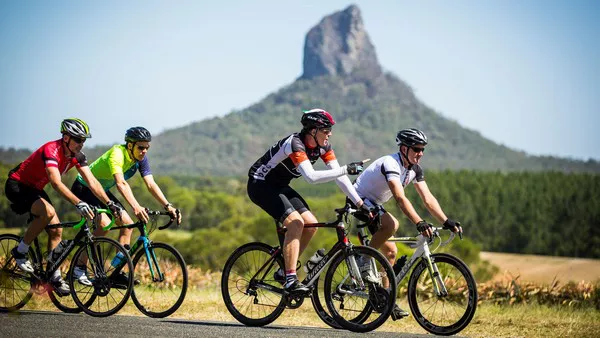Cycling, often touted as one of the most exhilarating and rewarding forms of exercise, not only promotes physical fitness but also offers a unique sense of freedom and connection with the outdoors. Whether you’re a beginner looking to delve into this captivating sport or an experienced rider aiming to refine your skills, mastering the art of cycling requires a combination of technique, dedication, and proper training. In this comprehensive guide, we’ll delve into the essential steps and strategies to help you become a proficient cyclist.
Understanding the Basics: Foundations of Cycling Mastery
Before embarking on your journey to becoming a skilled cyclist, it’s crucial to grasp the fundamental principles that underpin this sport. Familiarize yourself with the anatomy of a bicycle, including its various components such as the frame, wheels, gears, and brakes. Understanding how these elements work together will not only enhance your riding experience but also enable you to troubleshoot minor issues on the go.
Next, acquaint yourself with the principles of bike fit and posture. Ensuring that your bicycle is properly adjusted to your body proportions is essential for maximizing comfort, efficiency, and injury prevention. Experiment with saddle height, handlebar position, and cleat alignment to find the optimal setup that suits your riding style and physique.
Building Endurance: The Key to Longevity in Cycling
Endurance forms the cornerstone of cycling prowess, enabling riders to sustain prolonged efforts and conquer challenging terrain with ease. Begin by gradually increasing your mileage and ride duration, incorporating both steady-state rides and interval training sessions into your regimen. Focus on maintaining a consistent cadence and heart rate throughout your rides, gradually pushing your limits while listening to your body’s cues to prevent overexertion.
Nutrition and hydration are equally paramount in supporting endurance performance. Fuel your rides with a balanced combination of carbohydrates, proteins, and healthy fats, and stay adequately hydrated to optimize energy levels and stave off fatigue. Experiment with different pre- and post-ride meals to identify what works best for your body and enhances your cycling performance.
Mastering Technique: The Art of Efficient Pedaling
Efficient pedaling technique lies at the heart of cycling proficiency, enabling riders to maximize power output while minimizing energy expenditure. Focus on developing a smooth, circular pedal stroke, applying consistent pressure throughout the entire revolution. Engage your core muscles to stabilize your body and maintain a steady, aerodynamic position, reducing drag and optimizing efficiency.
Practice various cadences and gear ratios to hone your ability to adapt to different terrain and riding conditions. Climbing hills efficiently requires a balance of seated and standing pedaling, utilizing lower gears to maintain a steady cadence and conserve energy. Descending demands precise handling and braking skills, coupled with the ability to anticipate obstacles and adjust your speed accordingly.
Refining Skills: Techniques for Safe and Confident Riding
In addition to mastering the fundamentals of pedaling technique, aspiring cyclists must develop a repertoire of skills to navigate diverse riding scenarios safely and confidently. Practice bike handling drills such as cornering, braking, and maneuvering through obstacles in a controlled environment, gradually increasing the level of difficulty as your proficiency improves.
Enhance your situational awareness by scanning the road ahead, anticipating potential hazards, and maintaining a safe distance from other vehicles and cyclists. Familiarize yourself with traffic laws and cycling etiquette, signaling your intentions clearly and communicating effectively with other road users to ensure smooth and harmonious interactions.
Recovery and Maintenance: Nurturing Your Body and Bicycle
Cycling can be physically demanding, placing strain on muscles, joints, and the cardiovascular system. Prioritize rest and recovery to allow your body to recuperate and adapt to the stresses of training. Incorporate active recovery activities such as stretching, foam rolling, and low-impact cross-training to promote circulation, alleviate muscle soreness, and enhance flexibility.
Regular maintenance is also essential to keep your bicycle in optimal condition and prolong its lifespan. Develop a routine inspection checklist encompassing key areas such as tire pressure, chain lubrication, brake functionality, and overall bike cleanliness. Address any issues promptly to prevent mechanical failures and ensure a smooth and enjoyable riding experience.
Joining the Cycling Community: Finding Inspiration and Support
Finally, immerse yourself in the vibrant cycling community to draw inspiration, camaraderie, and support from fellow enthusiasts. Participate in group rides, cycling clubs, and local events to expand your social network, share experiences, and learn from more experienced riders. Embrace the spirit of camaraderie and encouragement, celebrating achievements and overcoming challenges together as a collective.
Conclusion
In conclusion, becoming a skilled cyclist is a journey that requires dedication, perseverance, and a willingness to continually refine your skills. By mastering the basics, building endurance, honing technique, and embracing a supportive community, you can unlock the full potential of this exhilarating sport and embark on countless adventures on two wheels. So, saddle up, clip in, and let the open road be your guide to cycling mastery.

